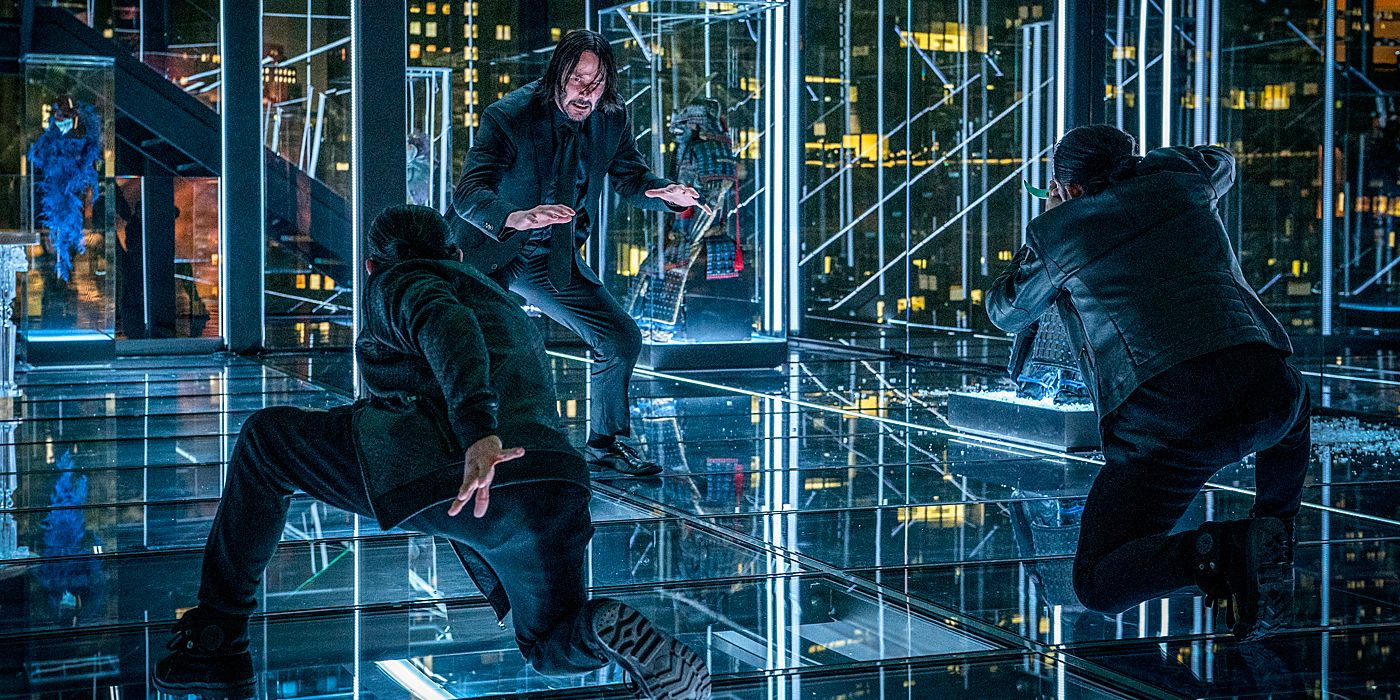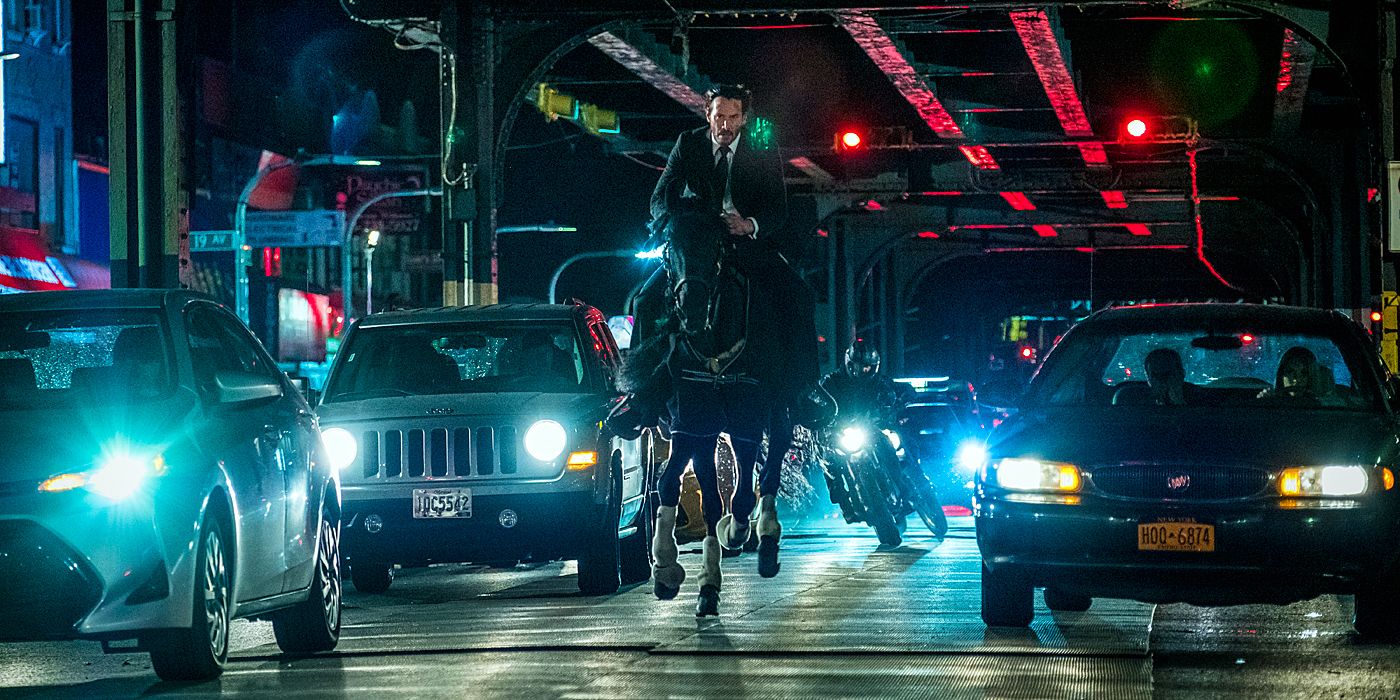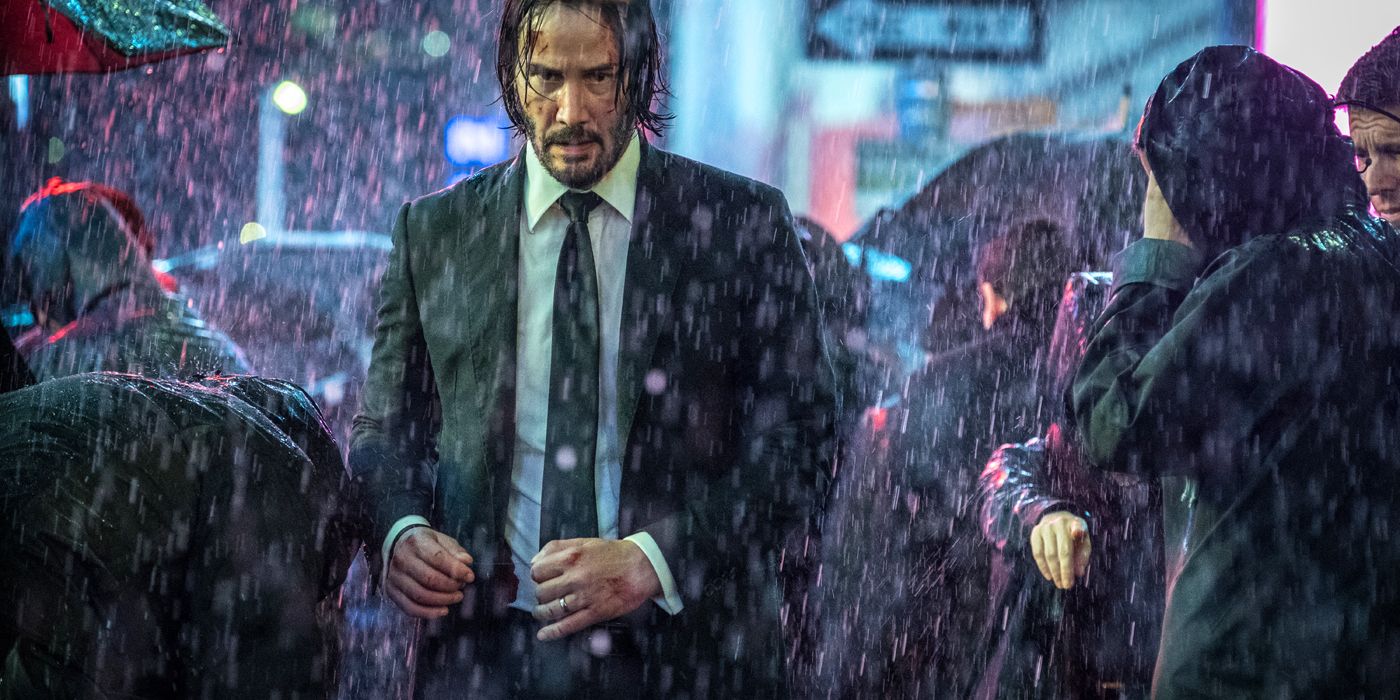WARNING: The following article contains spoilers for John Wick: Chapter 3 -- Parabellum, in theaters now.
A stylish neo-noir action franchise, the John Wick films juggle art and violence, and somehow find beauty in both. Director Chad Stahelski is a former stunt coordinator himself, so his control over the physicality of the characters is to be expected. However, he doesn't make the action frantic or too intense. If anything, the action in John Wick has always had more in common with a tightly choreographed dance than the shoot-'em-ups of other action series.
The newest installment, John Wick Chapter 3: Parabellum, takes that subtext and brings it to the forefront, elevating action to genuine art, while commenting on how the two are intrinsically connected.
Finding The Art In Murder
Parabellum exudes style, with scenes of John Wick (Keanu Reeves) running for his life bathed in the neon of New York City. The fight sequences are fast and ferocious, but never confusing or needlessly brutal. Instead, each move made by John or his would-be assassins is sleek and purposeful, just like the series' aesthetic. There are timely dodges, but those lead to more graceful movements. Even the harshest such brawl, between John and the massive killer Ernest, is framed against the majesty of the massive New York City Library.
RELATED: John Wick's Real Name & Backstory (Finally) Explained
Two of the biggest fights in the climax take place inside Winston's beautiful museum, full of crystal skulls and priceless artifacts. Against that backdrop, John engages in an extended duel with two of Zero's efficient soldiers. They maintain their assault on John, but never in an attempt to murder him. Instead they, like their boss, are far more interested in the art of the battle. But each action reveals another character detail, juxtaposing John's reluctance to get up with his otherwise-fluid movements.
The Dance Of Death
The most overt comparison between classical art and the brutal violence comes during John's visit to the Director, played by Anjelica Huston. John is led through her base of operations, where groups of young men wrestle and learn the techniques they'll eventually use to murder other men. Just down the hall, the young women hone their ballet skills. Later, when the Adjudicator comes to confront the Director for her decision to help John instead of kill him, the comparison becomes even more obvious. While Zero and his men move through the shadows and murder the soldiers of the Director, she plays classical music and watches the dancers on stage. The ninjas' own murder attempts are synchronized with the music, connecting their movements to the ballet.
Their dance is interrupted when a group of ninjas moves out of the darkness and onto the stage. If they weren't there to kill everyone, they could easily be just another part of the choreography. But their arrival portends the end of the beauty. All those graceful skills can be used for death instead of art, which fuels much of the inherent tragedy within John Wick. He tried to leave this world of violence when he met his wife, Helen; he found beauty in the world.
But John'sskill makes him too valuable as a killer. John Wick: Chapter 2 explored what happens when he 's forced to accept his murderous side for someone else, and how much that weighs on him. He's an artist with a gun, even if he doesn't want to be. He elevates death to high art.
Directed by Chad Stahelski, John Wick: Chapter 3 - Parabellum stars Keanu Reeves, Ian McShane, Laurence Fishburne, Halle Berry, Jason Mantzoukas, Lance Reddick and Anjelica Huston.



